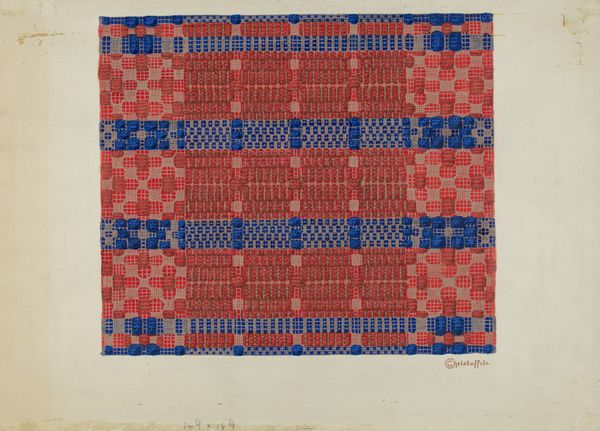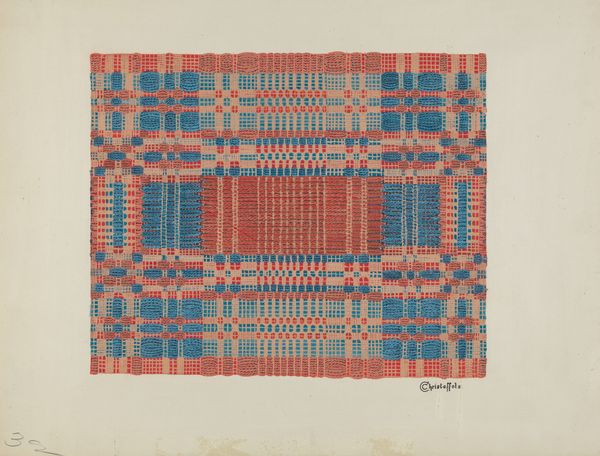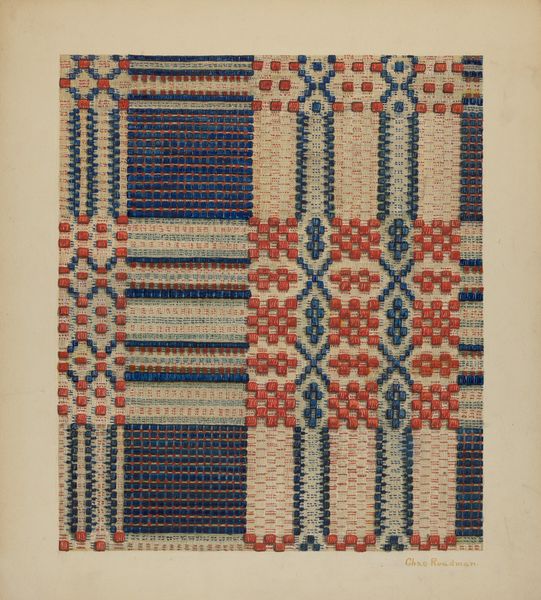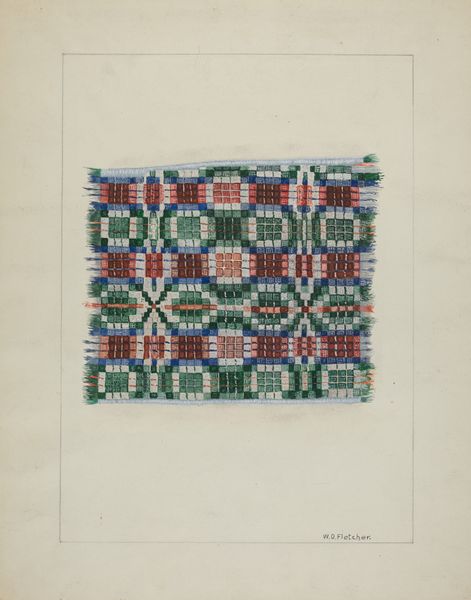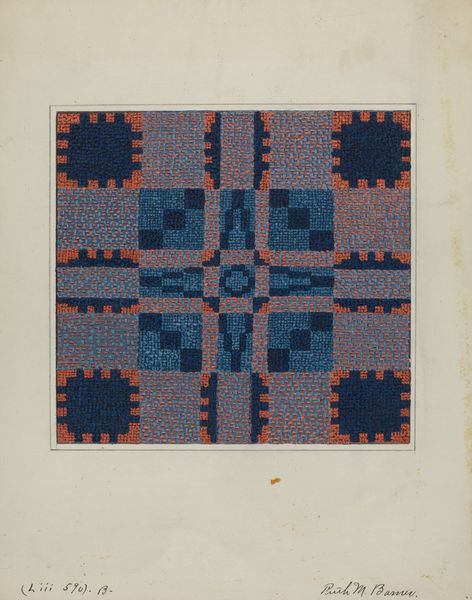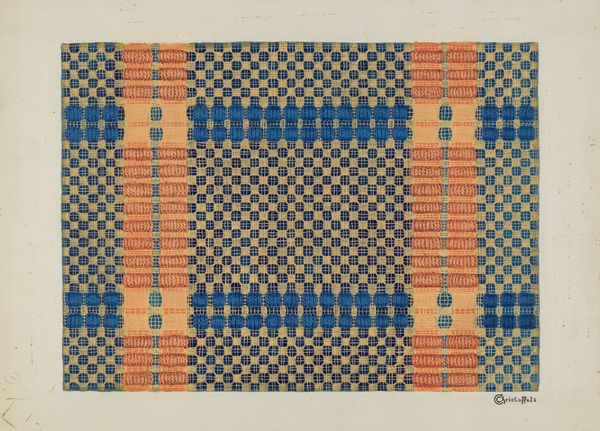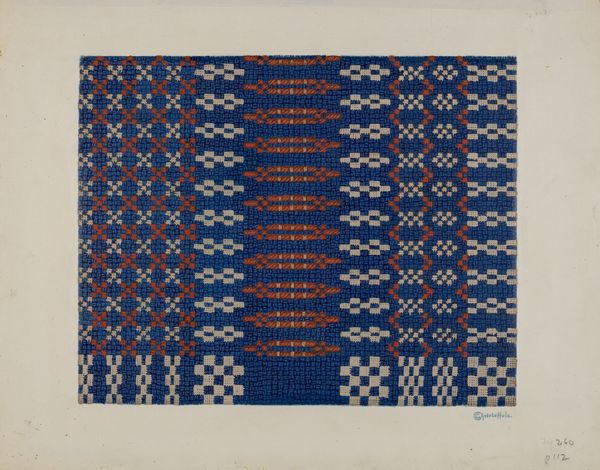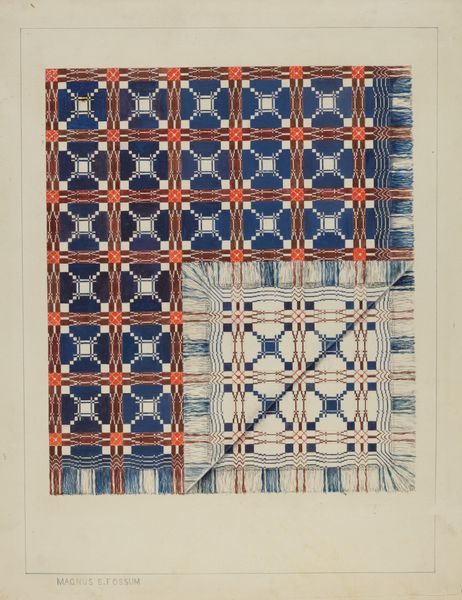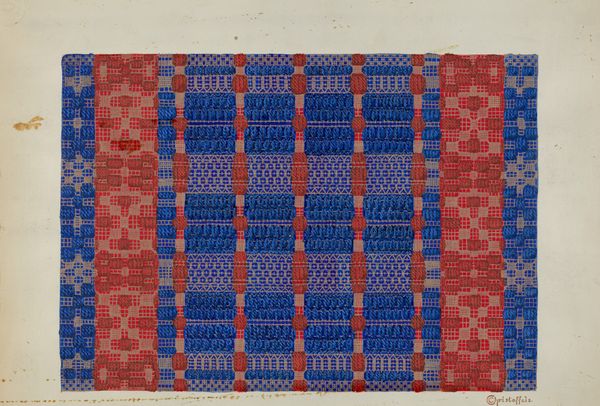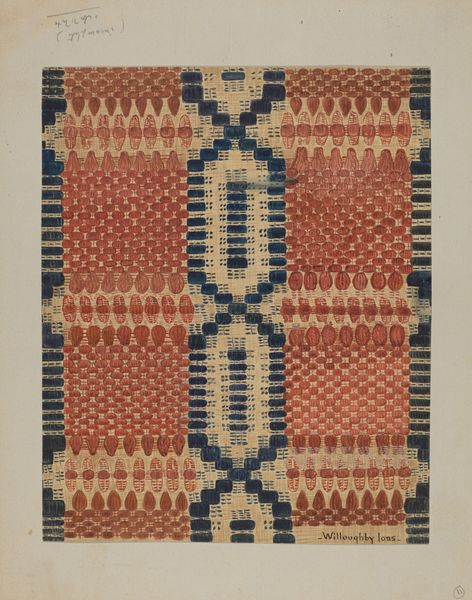
drawing, textile, watercolor
#
drawing
#
water colours
#
pattern
#
textile
#
watercolor
#
geometric
#
imprinted textile
#
watercolor
Dimensions: overall: 24.4 x 35.8 cm (9 5/8 x 14 1/8 in.) Original IAD Object: 90" long; 72" wide
Copyright: National Gallery of Art: CC0 1.0
Curator: What we’re looking at today is a section of a coverlet, dated around 1937, made by Cornelius Christoffels. It combines watercolor and textile. I'm struck by the intricate patterns and the juxtaposition of red and blue. What jumps out at you? Editor: I find the piece compelling because of its blend of art and craft, and I am curious about how the textile was made. What’s the story behind the materials and processes used to create it? Curator: Good question. Thinking materialistically, this piece prompts us to consider the labor involved. A coverlet isn't just decoration; it’s functional. Examining the weave, the type of threads, the dying processes used for the watercolor, and the techniques of textile production provides insight into both the skill of the artist and the social context of the time. Editor: So you are suggesting that we can learn about labor by studying the coverlet itself. How so? Curator: Precisely! We must consider the raw materials available, and how the textile medium blurs the division between utilitarian object and artwork. How were the dyes sourced? Was it produced in a domestic setting or a more industrialized one? Understanding the physical making of the coverlet shines a light on the cultural value assigned to handcrafted objects versus mass-produced items, right? Editor: Right, like we might value something from Etsy more because it is handmade? Curator: Yes, in essence. The labor intensiveness is visible and valued. It invites us to rethink traditional ideas about 'high art' by acknowledging the craft, material, and work embedded within it. Any thoughts? Editor: It really makes you appreciate the skill and the time that went into creating this piece and consider it beyond just aesthetics. Thanks for sharing that point of view. Curator: My pleasure! It’s always interesting to see how focusing on the materiality of a work can reveal new dimensions of meaning.
Comments
No comments
Be the first to comment and join the conversation on the ultimate creative platform.
